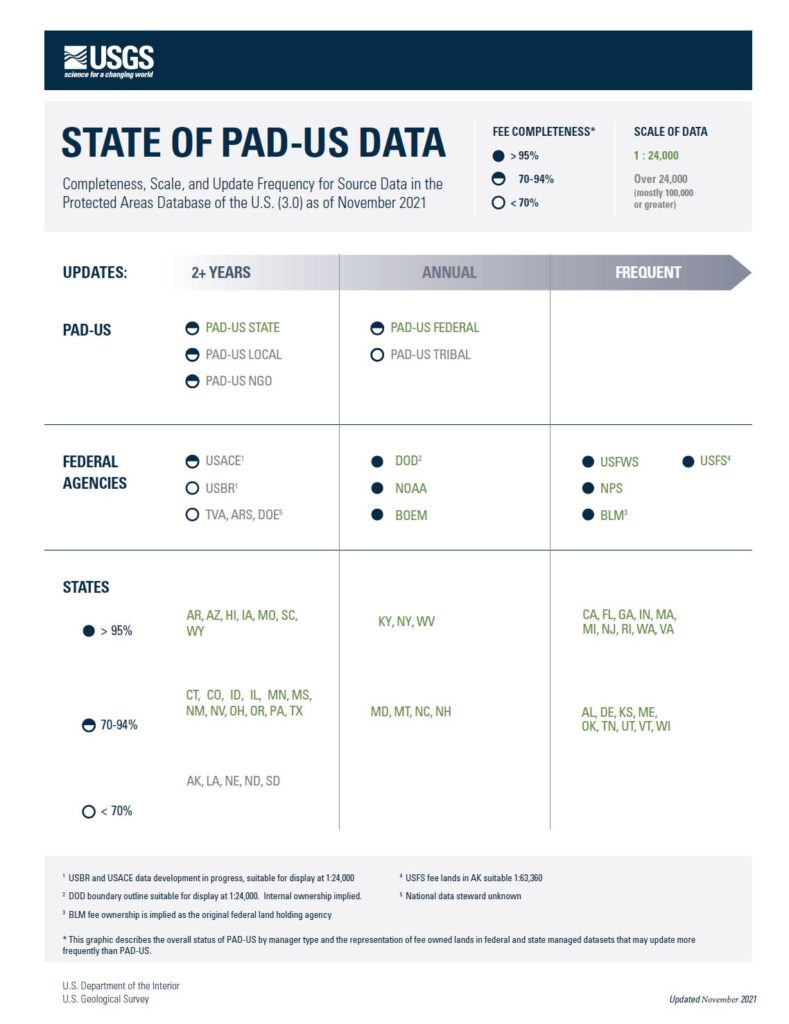Introduction

The USGS Protected Areas Database of the U.S. (PAD-US) is the official GIS-based national inventory of protected area boundaries within the U.S. It includes public lands and parks, Wilderness Areas, National Wildlife Refuges, reserves, conservation easements, Marine Protected Areas, and more.
The vision for PAD-US is that it be a single, regularly updated geospatial database that allows users to find the boundaries and essential attribute information for every public park and other protected area in the United States.
PAD-US is published by USGS in collaboration with Boise State University and through coordination with many Federal, State, and non-governmental organization data stewards.
PAD-US serves as a data coordination, gathering, and integration framework that synthesizes Federal agency data. It also encourages the development of comprehensive, standardized inventories by State data stewards. PAD-US also has collaborative relationships with other governmental and nonprofit gatherers of related data.
PAD-US is unique because it is:
- Comprehensive — It is based on the goal of inventorying all public land and other protected areas, covering everything from small neighborhood parks to huge Wilderness Areas, land trust preserves, easements, and Marine Protected Areas.
- Publicly available — PAD-US is published by the Federal government; it is open and free to use for all public and commercial applications and research purposes.
- Validated — The PAD-US Data Manual has developed over time through rigorous peer and other review and testing by data stewards across jurisdictions.
- Authoritative — PAD-US is the official inventory of America’s protected areas – a National Geospatial Data Asset, aggregated from authoritative data sources.
- Adaptable — PAD-US is designed to support a wide range of uses, not just a specific type of use.
- Expected — Having a single, federally led source of information on public parks and open space lands makes it intuitive to look for these national data.
- Collaboratively developed — PAD-US uses a process based on partnerships with Federal agencies and affiliations with key groups in each State plus national nonprofits and other organizations.
All of this makes PAD-US an outstanding data resource for many different users to apply to research, land management, policy analysis and development, service targeting, and more.
